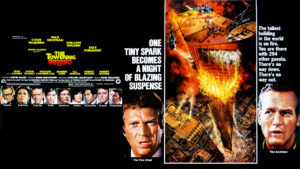On Facebook I saw a user post the question; What Made Star Trek II: The Wrath of Khan so good? Rather than answer in the comments I decided to take that up as an essay.
 There are many reasons why The Wrath of Khan is such a good film, and most of them can be found in the script.
There are many reasons why The Wrath of Khan is such a good film, and most of them can be found in the script.
The characters acted as they should have from the series. It’s known that the dry, colorless script for Star Trek: The Motion Picture flattened the life out of their characters, shattering their relationships, and setting them in pursuit of opposing goals. Spock using Kirk and emergency to seek his own enlightenment? That’s hardly the Spock we knew. While lots of good drama can be crafted from close characters in opposition, breaking the fundamental friendship of these characters does little to endear fans. Khan returned us to the characters and relationships we knew and missed.
The story flowed logically from the actions of the characters. Once Reliant stumbled across the survivors of the Botany Bay the rest of the events flowed naturally from those characters and their viewpoints. Pull out a character and the story falls apart. What I am saying is that there was indeed a real story and not simply a plot.
The limited budget meant that the filmmakers were forced to think about story over spectacle. It can be a curse to have unlimited or nearly unlimited special effects budgets. Instead of thinking about character beats and moments, it is easy to get seduced into bigger and more elaborate stunts and special effects.
The film never lost the people in the plot. A few years ago at a Science-Fiction convention I had the chance to confirm with the director Nicholas Meyer, what I think is one of Khan’s most brilliant bits of editing. Watch that film closely, every single time a weapon, phaser or photon torpedo, strikes a vessel the very next shot is people getting hurt and killed. Every single time. This pummels you with the inescapable knowledge that this grand battle between starships is always about the people aboard and the costs that they pay.
This film has no bloat. It hits the ground running and does not let up. And yet in that fast action/adventure pace it always finds time to breathe and reveal character.
Truly this is a masterwork of filmmaking.


